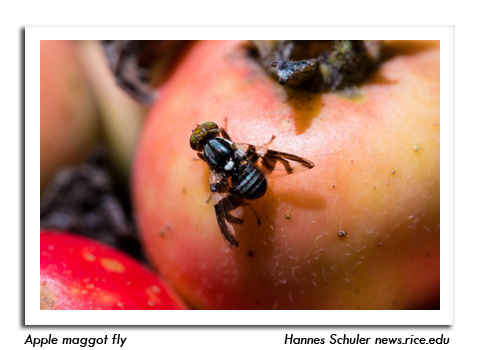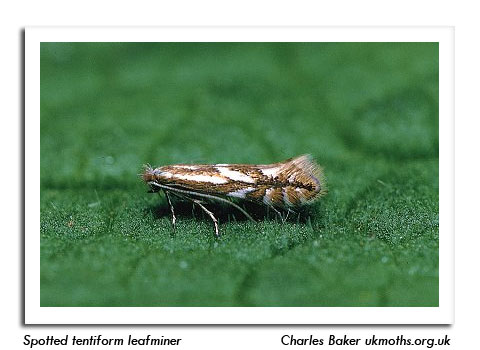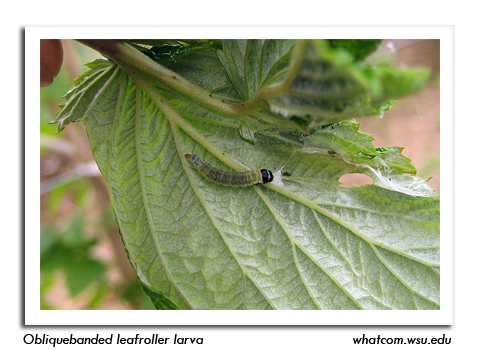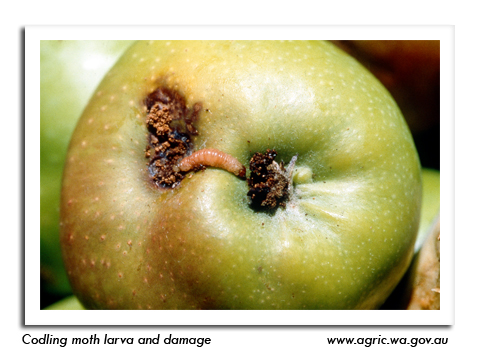
 |
|
|
Fruits
Volume 61 Number 17 Date 08/25/2016 APPLE MAGGOT - Peak emergence of flies occurred about two weeks ago depending upon the area of the state, and activity has generally declined. Counts have been comparatively low this season, though the external depressions and brown, internal larval tunnels indicative of AM infestation are appearing on apples in orchards impacted by hail damage where AM flies have been more abundant this season. SPOTTED TENTIFORM LEAFMINER - The third and last flight of the season has begun to decline. Trap counts ranged from 0-846 moths from August 18-24, with the anomalous high count registered at Spring Valley in Pierce County. Most orchards reported weekly captures of fewer than 175 moths, which is considered low for this pest. Moth activity should subside by mid-September. OBLIQUEBANDED LEAFROLLER - Orchardists are reminded to maintain pheromone traps for this insect throughout September. Second-generation larvae occasionally cause severe fruit damage late in the growing season and moth counts in late August and September can be a predictor of damage potential by first brood larvae next spring. CODLING MOTH - Moderate to high counts were registered in several orchard locations in the past week, confirming that codling moth flights are still occurring. Economic counts of 5-20 moths per trap were reported from Edgar, Hixton, Mequon, Mineral Point, New Berlin, Raymond, Rochester and Stoughton. Pheromone trap checks may be discontinued once 1,700 degree days (modified base 50°F) have accumulated from the first biofix, at which time approximately 90% of second-flight adults will have emerged. -- Krista Hamilton, DATCP Entomologist 





|
|
|